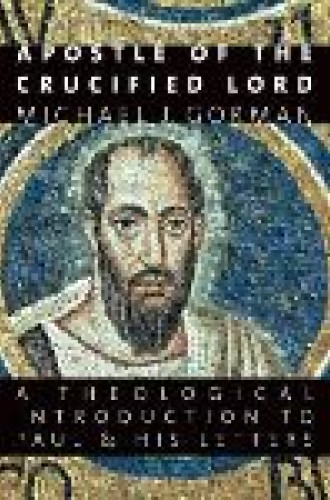Apostle of the Crucified Lord
To be a Christian is to suffer like the Lord. Or so St. Paul thought. Or so Michael Gorman thinks Paul thought. If there is a unifying theme to this nearly 700-page “introduction” to Paul, it is the cruciform shape of the apostle’s thought, which is also the pattern for Christian life. In letter after letter, whether explicitly or implicitly, Paul brings the story or “narrative pattern” of Jesus Christ (best set forth in the pre-Pauline hymn of Philippians 2) to bear upon the concrete situations—the congregational life—of early Christian communities.
Seen in this light, Paul is not primarily a systematic theologian (frequently denied); nor is the label hermeneutical theologian (frequently affirmed) most appropriate. Rather, “pastoral theologian” best describes Paul as we know him from his letters.
Gorman’s thorough analysis of every letter in the Pauline corpus— including those Paul probably did not write (e.g., 1 Timothy)—discerns Paul’s consistent concern to deal with the various pressing issues of the communities by appealing to the life of Christ. For the “strong” in Rome not to worry about the stumbling of the “weak” is for the former to live in direct contradiction to the pattern of Jesus’ own life, since he deliberately humbled himself for those who were weak. Or, to take another example, the persecution in Thessalonica is interpreted as normal for those participating in Christ. Jesus was, after all, tortured and killed.
Gorman’s work is not monothematic, however. He develops other important Pauline themes, including the significance of social difference. The apostle calls Christian communities to a life that differs in substance and outward form—a difference that is actually perceivable—from that which is termed rather broadly “culture.” It was standard fare in Corinth and elsewhere for gentiles to participate in various pagan cults. It is precisely on such an issue that Paul wants Corinthian Christians to run counter to their surrounding culture—and thereby make an unavoidably public statement.
Of course, not many actual altars to Dionysius, Ares or the Roman emperor are in use today. Instead we do obeisance to pleasure, violence and power. Christian communities that “live” or “embody” the point of Paul’s letters will shun the worship of such false gods and in so doing witness to the power of Christ in the world. In this way, Pauline Christians are “communities of performers,” instantiating by evangelical example the pattern of existence that is Christ’s life, death and resurrection.
Traditional Lutherans may not recognize their Paul in Gorman’s portrayal. He follows virtually all of the significant turns in Pauline scholarship in the past quarter century. Yet he is not simply parroting other scholars. There is evidence in every chapter of deep wrestling with the texts themselves and of subtle positions taken within debates in the secondary literature—literature and debates which, fortunately for the average reader, are not discussed in monotonous detail. At the end of each chapter, in addition to offering excellent “Questions for Reflection and Discussion” (which do not shirk the tough issues) and brief, annotated bibliographies for further reading, Gorman frequently includes significant quotations from other interpreters (ancient and contemporary) who have perspectives that are at odds with his own exegesis. There is humility in Gorman’s style, and he shows a willingness to question his own positions.
The book gives us plenty with which to argue (e.g., I suspect many will have difficulty with Gorman’s interpretation of the so-called household codes), and one does occasionally miss an emphasis on resurrection as that power which speaks against the meaninglessness of suffering. But as a whole, Apostle of the Crucified Lord is an excellent theological introduction to Paul, one that would benefit preachers, teachers, students and laypeople alike.





